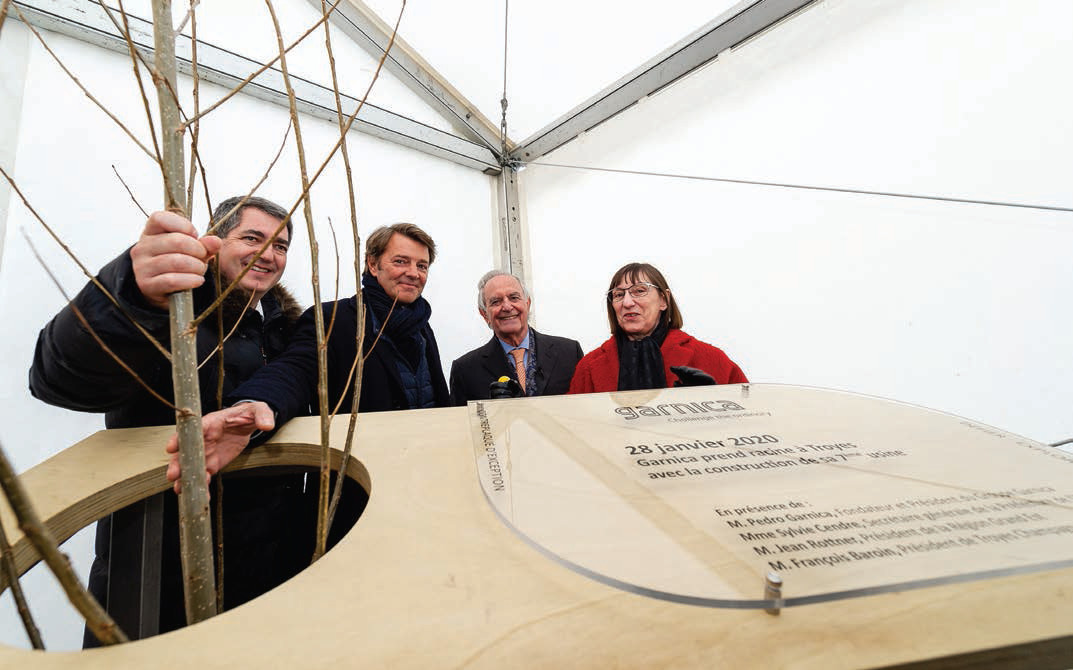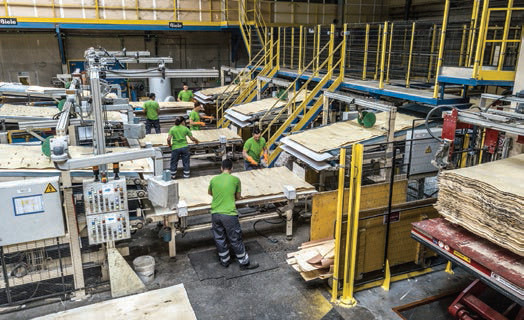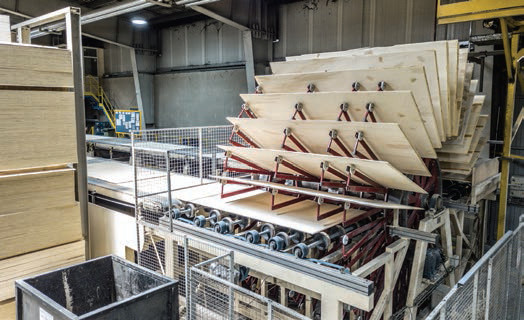Garnica builds seventh factory
6 March 2020Leading European plywood manufacturer Garnica has commenced construction work on its seventh factory, in north-central France. Stephen Powney looks at the investment and recent developments at Garnica
At the end of January this year Spanish based Garnica Plywood embarked on its latest project. Company president Pedro Garnica laid the first stone to mark the start of construction on what will become Garnica’s seventh factory at a site in the Grand-Est region of north-central France.
Fittingly for a plywood manufacturer with a strong emphasis on poplar as a raw material, a poplar tree was planted during the ceremonial start of construction to symbolise's the company's poplar focus and the fact the factory will produce veneer and eventually plywood from sustainable poplar plantations.
Also attending the event at the Grand Troyes business park was the president of the Grand Est region, Jean Rottner; the president of Troyes Champagne Métropole François Baroin; and the general-secretary of the prefecture of Aube, Sylvie Cendre.
For Garnica the site will be its second facility in France – the existing production site being at Samazan in the south-western (Nouvelle-Aquitaine) region.
The €80m total latest investment will see the new factory created in stages. A first stage will be completed in mid-2021, when the factory will start operations with 40 new jobs initially created. Once fully operational, it will have created 300 direct jobs.
The peeling line will be installed first, followed by the drying lines to produce veneers. Capacity of peeling and drying will then be doubled, with the final step being to add the pressing equipment and begin manufacturing the finished plywood products.
Technology supplier partners are not being named currently but Garnica said the equipment to be installed would be the “most advanced technology”.
In total, the factory will cover an area of 40,000m2 and will stand on a plot of 20 hectares.
“All these stages will depend on three main factors: the market, local workforce availability and competencies and dynamism of poplar plantations,” Garnica told WBPI.
Garnica decided to create a new plant in Troyes based on various criteria, including poplar availability.
Troyes is in close proximity to the large poplar plantations in the Seine and Aube valleys. The north-east of France is believed to contain the biggest area of poplar in Europe.
The company said construction of this new factory would be an incentive for private farmers and nearby municipalities to plant poplar and would contribute to local reforestation.
Garnica has been actively involved for the last two years in the Grand-Est region aimed at encouraging the cultivation of poplar trees in the region.
Other factors included client proximity, good travel connections and workforce availability.
“The Troyes plant will be connected with other plants in the group, including Samazan, supplying veneer and will serve current markets of the company,” Garnica added. “It will be a plant dedicated to poplar.”
Poplar is of course a very important component part of Garnica ’s success and the company has long experience in selecting poplar clones at its own nursery.
Garnica’s use of fast-growing plantations and sustainably-managed forests with PEFC and FSC certification is designed to guarantee environmental responsibility and secure a reliable local source of raw material.
Use of wood from local plantations and forests from where the timber is extracted also benefits rural areas by improving quality of life for residents and reducing the carbon footprint.
An average poplar tree captures 11 tonnes of CO2 per year per hectare and grows four times faster than tropical species.
The start of building work at Troyes comes less than a year after Garnica acquired its sixth facility, in Spain.
The acquisition of radiata pine plywood panel manufacturer Álava-based Madera de Llodio was a consolidation of Garnica’s expansion programme and effectively guaranteed the future development of the facility.
For both companies the acquisition offered opportunities for growth expansion into new markets through the diversification of raw material and product portfolios. Maderas de Llodio was set up in 1982, operating out of the town of Llodio and mainly engaged in the production of okoume, pine and other panels.
From 2003, its business strategy switched to the production of pine panels and it relocated to the Santa Cruz Industrial Estate in Llodio.
The economic crisis hit in 2009 and the Spanish market sailed into rough waters. As a result, Maderas de Llodio embarked on an internationalisation process while also focusing and simplifying production. Today, 80% of its sales are exports and total production is 42,000m3 of panels, with a turnover in excess of €21.5m.
Garnica posted a turnover of €230m in 2019 and exports its products to 45 countries. At the time of its takeover of Maderas de Llodio, Garnica said its group plywood production capacity was 330,000m3 and an export ratio of 93% – mainly to western Europe and the US.



